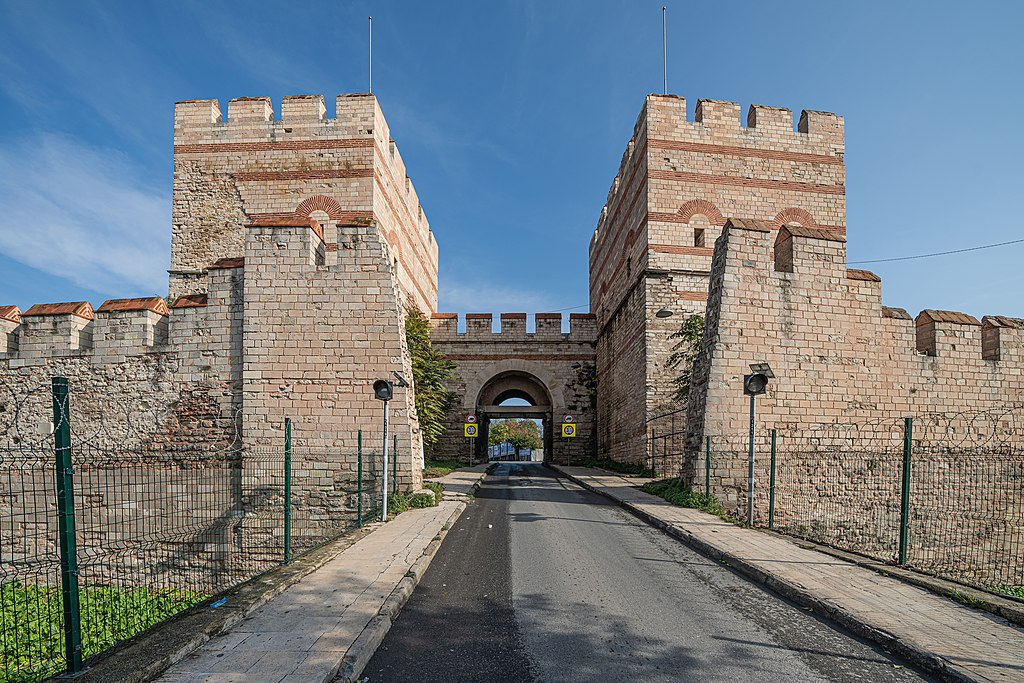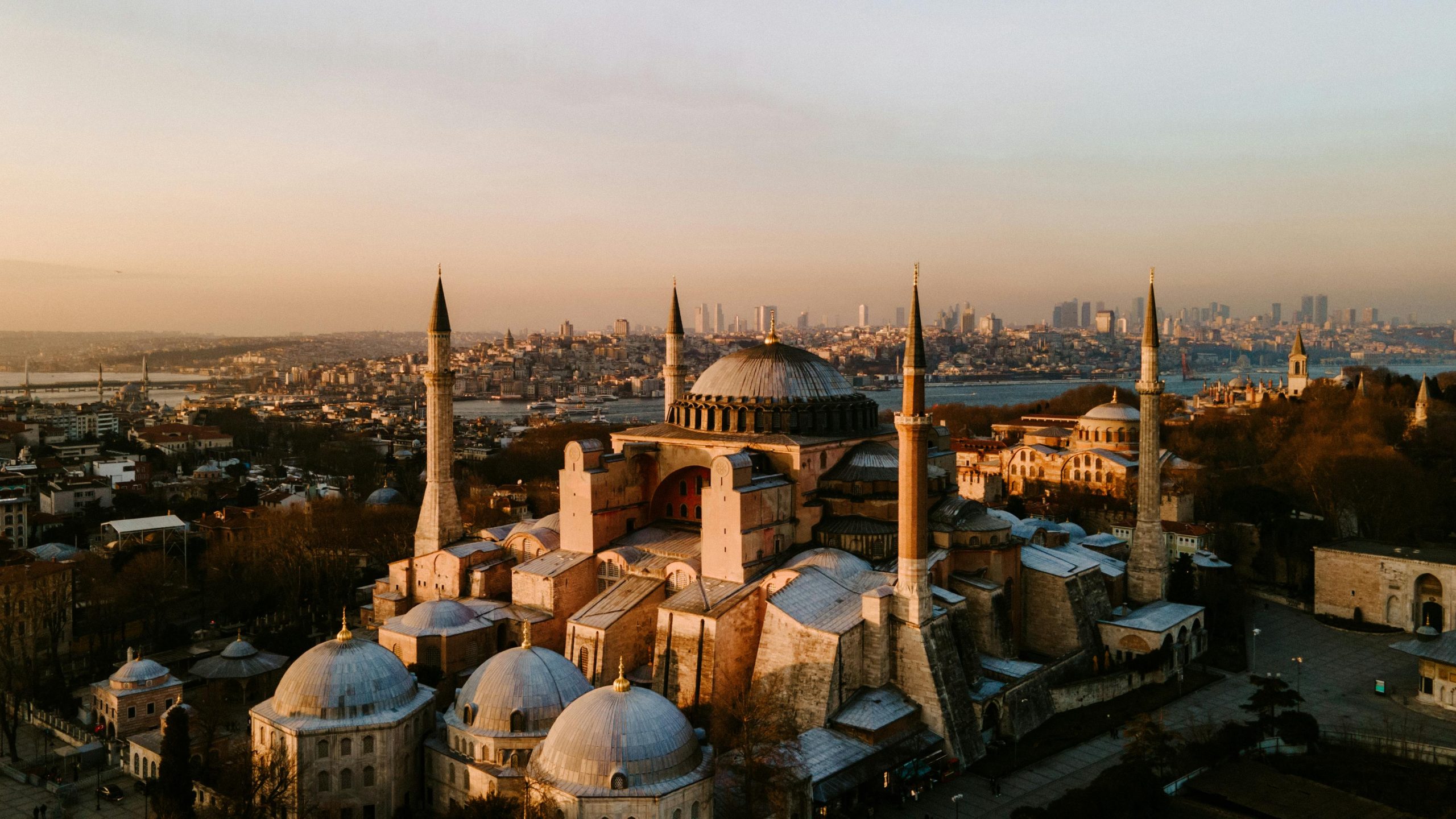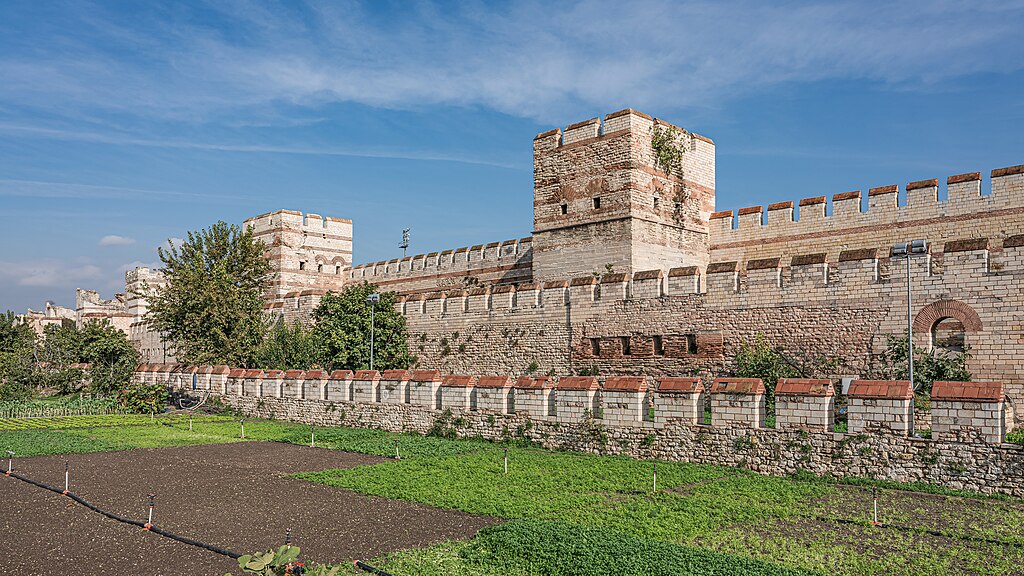Xylokerkos Gate, Istanbul
City Gate in Istanbul

Hidden between the 22nd and 23rd towers of Istanbul's mighty Theodosian Walls lies the Xylokerkos Gate, also known as the Gate of Belgrade — a name layered with centuries of history. Its story weaves together Byzantine superstition, Ottoman conquest, and urban legend. Measuring 12 meters wide and nearly 20 meters tall, this impressive gate once opened to a wooden amphitheater outside the city, giving rise to its Greek name “Xylokerkos,” meaning “wooden circus.” Today, it stands as one of the most atmospheric remnants of Constantinople's defenses and one of the top sights in Istanbul for history enthusiasts exploring beyond the Old City's tourist core.
The Xylokerkos Gate was closed and reopened multiple times throughout history, earning nicknames and meanings with each era. It was sealed by imperial decree, reopened centuries later, and eventually known as the “Closed Gate” — a fitting symbol of Constantinople's shifting fortunes. This spot is also a great place to visit on a walking tour of the Theodosian Walls, offering dramatic views and a tangible connection to the empires that once ruled here.
History and Significance of the Xylokerkos Gate
The Xylokerkos Gate dates back to the 5th century and was one of the secondary entrances along the Theodosian Walls — the vast defensive system that encircled Constantinople. The gate's first recorded closing came in 1189, when Emperor Isaac II Angelos ordered it sealed. The historian Niketas Choniates recounts that this decision was spurred by a prophecy claiming that Frederick Barbarossa, the Western Emperor leading the Third Crusade, would enter the city through this very gate. Superstition and politics intertwined, and the gate was shut tight to thwart fate itself.
After remaining sealed for more than a century, the gate was reopened in 1346, during a period of internal recovery and rebuilding. By the Ottoman era, following Sultan Suleiman the Magnificent's conquest of Serbia in 1521, the gate took on a new identity — the “Gate of Belgrade.” Its name honored the Serbian captives settled in the surrounding district. Before the siege of 1453, the Byzantines once again sealed the Xylokerkos Gate, perhaps to strengthen their defenses or out of lingering superstition. It remained closed for centuries and became known in Ottoman Turkish as “Kapalı Kapı,” or the “Closed Gate.” Finally, in 1886, it was reopened to the world — a gesture symbolic of the city's enduring ability to reinvent itself.
Things to See and Do at the Xylokerkos Gate
Today, visitors can admire the gate's grand scale and imposing structure, still flanked by its original defensive towers. The stone and brick masonry reveal the layered construction typical of the Theodosian Walls, while the archways hint at the gate's once ceremonial and strategic role. A staircase leads up to the top of the adjacent towers, offering sweeping views across the surrounding neighborhoods and the skyline of modern Istanbul.
It's easy to imagine the weight of history here — the superstitious emperor's decision to seal it, the soldiers guarding it during sieges, and the workers who later restored it for peaceful use. The quiet surroundings and panoramic vantage points make this gate ideal for photography and contemplation. For those walking along the of Contantinople, the Xylokerkos Gate provides a peaceful, atmospheric stop to rest and absorb the city's millennia-old story.
How to Get There
The Xylokerkos Gate is located in the Fatih district of Istanbul, along the southern stretch of the Theodosian Walls, near the intersection of Belgradkapı and Silivrikapı streets. The nearest Marmaray station is Kazlıçeşme, about a 20-minute walk from the site. You can use the official TCDD Taşımacılık website to check schedules, compare routes, and purchase tickets for Turkey's national and regional trains operated by TCDD. For a more streamlined experience (especially if you prefer an English interface or want to compare across countries), we recommend using Omio, which allows you to easily compare prices, schedules, and book train tickets across Turkey and the rest of Europe — all in one place. For drivers, there is limited parking in nearby residential streets, though small paid car parks can be found near the Yedikule area. If you are looking to rent a car in Turkey I recommend having a look at Discover Cars, first, as they compare prices and review multiple car rental agencies for you. The gate can also be reached by bus or taxi following Kennedy Avenue westward from Sultanahmet.
Practical Tips on Visiting the Xylokerkos Gate
- Best time to visit the Xylokerkos Gate: Late afternoon for soft lighting and fewer visitors.
- Entrance fee in Euros: Free.
- Opening hours: Accessible at all times; exterior viewing only.
- Official website: Not applicable.
- How long to spend: 20–30 minutes.
- Accessibility: Some uneven terrain and steep steps; sturdy footwear recommended.
- Facilities: Minimal — bring water and essentials.
- Photography tip: Climb the nearby tower stairs for panoramic city and wall views.
- Guided tours: Featured in some historical and architectural tours of the city walls.
- Nearby food options: Local eateries and bakeries in the Belgradkapı area.
Is the Xylokerkos Gate worth visiting?
Yes. The Xylokerkos Gate is one of the best places to visit in Istanbul for travelers who appreciate quiet, authentic historical sites away from the crowds. Its blend of myth, prophecy, and architectural grandeur makes it one of the most evocative gates along the Theodosian Walls. Standing before its centuries-old stones, you can almost feel the pulse of ancient Constantinople.
FAQs for Visiting the Xylokerkos Gate
Why was the Xylokerkos Gate sealed?
According to legend, Emperor Isaac II Angelos closed it in 1189 to prevent a prophecy that Emperor Frederick Barbarossa would enter through it.
When was it reopened?
It was reopened in 1346 and again permanently in 1886 after being known for centuries as the “Closed Gate.”
Why is it also called the Gate of Belgrade?
Because Serbian captives settled in the nearby district after the Ottoman conquest of Belgrade in 1521.
Can visitors climb the towers?
Yes, stairs on both sides allow visitors to reach panoramic viewpoints.
Is it part of the Theodosian Walls?
Yes, it forms part of the 5th-century defensive system built under Emperor Theodosius II.
Nearby Attractions to the Xylokerkos Gate
- Golden Gate – The grand triumphal arch once used for imperial ceremonies, located nearby in Yedikule.
- Yedikule Fortress – A 15th-century Ottoman fortress incorporating parts of the Theodosian Walls.
- Theodosian Walls – A UNESCO-recognized stretch of fortifications protecting the ancient city.
- Silivrikapı Gate – Another historic city gate featuring impressive Byzantine masonry.
- Gülhane Park – A scenic retreat near the city center, once part of Topkapi Palace gardens.
The Xylokerkos Gate appears in our Complete Guide to Visiting Istanbul!
This website uses affiliate links which may earn a commission at no additional cost to you!
Visiting Xylokerkos Gate
Nearby Attractions
- Gate of the Spring (0.7) km
City Gate in Istanbul - Golden Gate (0.8) km
City Gate in Istanbul - Yedikule Fortress (0.8) km
Castle in Istanbul - Marble Tower (1.2) km
Tower in Istanbul - Gate of Rhesios (1.6) km
City Gate in Istanbul - Panorama 1453 History Museum (2.1) km
Museum in Istanbul - Gate of Saint Romanus (2.4) km
City Gate in Istanbul - Fifth Military Gate (2.7) km
City Gate in Istanbul - Gate of Charisius (3.8) km
City Gate in Istanbul - Chora Church (3.8) km
Church in Istanbul


